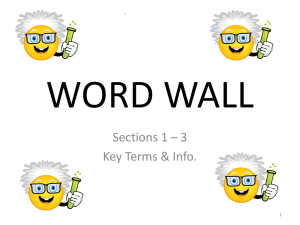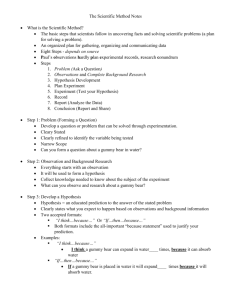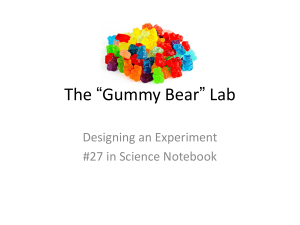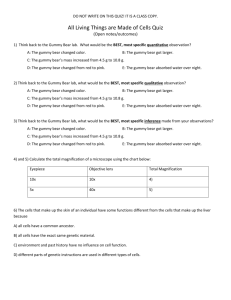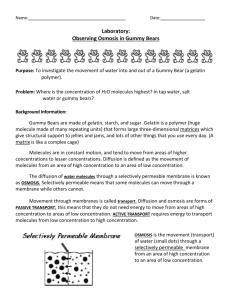Scientific Method Review Power Point
advertisement
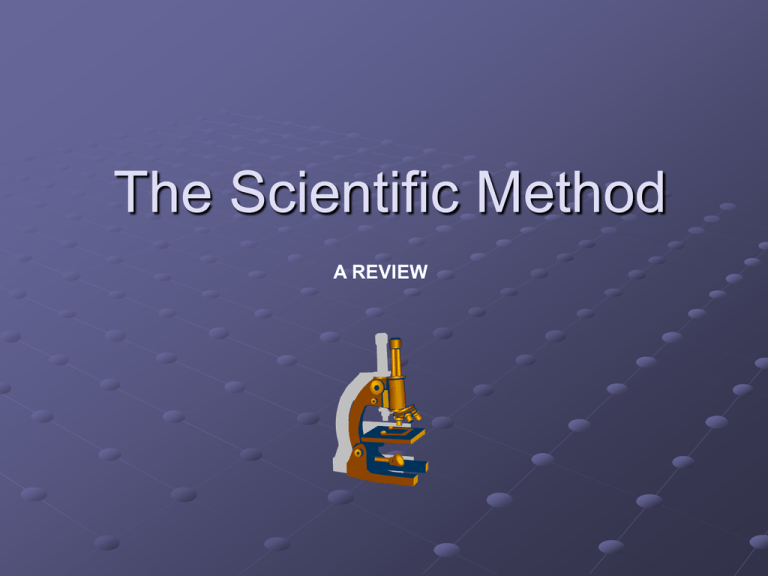
The Scientific Method A REVIEW Controlled Experiments Controlled experiments are necessary to make sure that an experiment can be repeated by another scientist. All variables are controlled except one so that the scientist will be able to tell what made the difference in their results. Purpose The Purpose is what you are trying to find out with your experiment. The purpose can be expressed as a question. Example: How will gummy bears be affected if they are in water for 24 hours? Research This step involves finding out some information about your purpose question. Research could include: Reading books, web pages or magazines Watching documentary videos Trial and error exploration with materials Interviewing experts on a topic Background Knowledge Facts you already know about your purpose question Facts can come from your everyday life. Facts can also come from previous labs or experiments. Facts can come from your research on the topic. Example: I know color fades when an object is soaked in water. Some things dissolve in water. I know when some things are soaked in water they get bigger. Hypothesis Based on background knowledge Based on research A hypothesis is an educated guess. A hypothesis is: An “if / then / because” statement Always made BEFORE an experiment Something that can be measured with data or observation Example The hypothesis states IF my gummy bear is in water for 24 hours THEN it will get bigger BECAUSE when some things are soaked in water they get bigger. Materials List Must be in list form Must identify quantity of each item needed. Procedure Number and write step-by-step instructions in complete sentences. Clear and detailed procedure is necessary for another scientist to be able to repeat your experiment to check your results. Data Data needs to be collected in order to form a conclusion about your hypothesis. Data can be OBSERVATIONS Data can be a table of NUMBERS Analysis Analysis can be answering some or all of the following questions: What happened? Why did the experiment go the way it did? What did you think would happen and what actually happened? What could possibly have caused your results? Why did it happen that way? Conclusion Restates hypothesis Accepts or rejects the hypothesis Explains why the hypothesis is accepted or rejected. Data is including to explain why the hypothesis was accepted or rejected. The data can be observational or numbers/measurements. A hypothesis can be partially accepted and partially rejected. Example The hypothesis stated IF my gummy bear was in water for 24 hours THEN it would get bigger BECAUSE when some things are soaked in water they get bigger. The hypothesis was ACCEPTED because before soaking in the water the length of the gummy bear was 2.8 cm and after soaking in water for 24 hours the gummy bear’s length was 4.0 cm. Real Life Application Explains how the results can be used in the scientist’s real life. Explains how someone can learn from the experiment and use the results to help them complete tasks or understand concepts.





